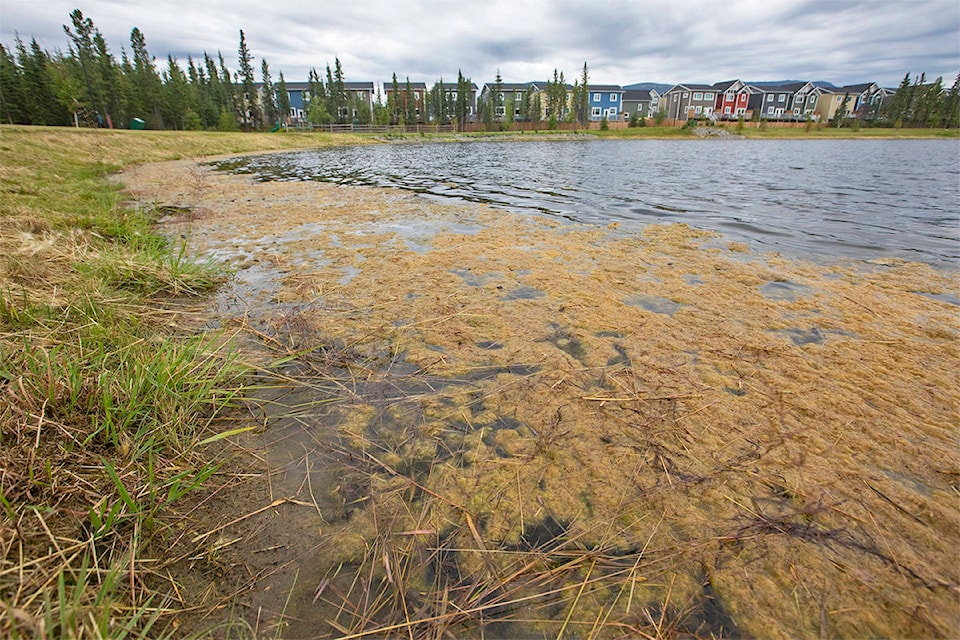The City of Whitehorse and Yukon government are continuing to battle against algae in Whistle Bend’s storm water pond, with the territory now taking water samples as it looks for short and long-term solutions.
In a statement released Aug. 5, city officials outlined the efforts of both governments to reduce the amount of algae in the pond.
“Addressing higher than normal algae production in the pond requires a coordinated and comprehensive approach by both parties,” the release states.
As the developer of the neighborhood, the territory oversees the overall storm water management plan with the city being responsible for maintaining the system that’s in place.
Pond algae has been an ongoing issue at the neighbourhood pond.
The city has attempted to deal with it in a variety of ways including adding dye to the pond water to reduce heat and light absorption, which promote algae growth; applying Algaecide to the pond; physically removing algae; planting aquatic vegetation to stabilize the shoreline and for nutrient uptake; and operating and repairing the existing aeration system, water fountain and intake screen, which has been “overwhelmed” by algae growth.
City engineer Taylor Eshpeter said in an email that “very little” has been spent by the city on the efforts, though he could not provide a precise spending figure.
“We do not have the exact amounts that were spent.”
The Yukon government, meanwhile, is collecting water samples from the pond.
Yukon Department of Community Services spokeswoman Bonnie Venton Ross said sampling work began in July will be done by the end of August at which time the territory will work with the city to develop a management plan that would be implemented next summer. The water sampling and lab work is estimated to cost $4,200.
Over the short-term, it’s expected officials will gain an understanding of the nutrients in the pond. That will be used to develop the management plan for the pond and determine what actions will be taken.
“This data will contribute to determining future upgrades or management strategies,” according to the city’s statement.
Both the city and territory said the plan could include moves like reducing the amount of algae nutrients coming into the pond, adding structures that could inhibit the growth of algae, and enhancing aeration and/or vegetation near the pond.
In its statement, the city asked residents near the pond to “do their part by reducing their use of fertilizers in areas around the pond”.
The pond functions as part of the overall storm water system and, therefore, some algae growth is expected, the city said.
“Swimming and other recreational activities in or on the pond were never intended goals and are not permitted.”
Contact Stephanie Waddell at stephanie.waddell@yukon-news.com
